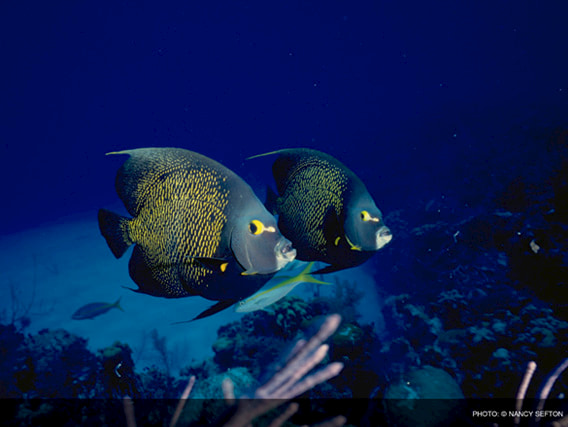
Conservation Trust Funds: Key Drivers of Progress for Nature
To highlight the crucial role of Conservation Trust Funds (CTFs) in protecting global biodiversity, leaders and experts in environmental finance participated in the webinar session “How Conservation Trust Funds Are Driving Progress for Nature.” This event brought together prominent organizations, including Enduring Earth, the Latin American and Caribbean Network of Environmental Funds (RedLAC), the Global Environment Facility (GEF), and the Consortium of African Funds for the Environment (CAFÉ). Specialists in natural resource management and sustainable financing shared insights into the impact and opportunities that CTFs offer in addressing environmental challenges.
Conservation Trust Funds have proven to be a key mechanism in securing sustainable financing for biodiversity conservation, strengthening protected areas, and supporting local communities. During the webinar session, participants highlighted the role of CTFs in implementing the Kunming-Montreal Global Biodiversity Framework, protecting natural areas, and supporting local communities, as well as the significance of Conservation Trust Funds’ contributions and their future potential.
Among the panelists were Adriana Moreira, Head of the Partnerships Division at GEF; Renée González Montagut, Executive Director of the Mexican Fund for the Conservation of Nature (FMCN); Zdenka Piskulich, CEO of Enduring Earth; and Carl Bruessow, Executive Director of the Mulanje Mountain Conservation Trust in Malawi. They shared experiences on the evolution of CTFs across different regions, emphasizing the need to strengthen governance, diversify funding sources, and innovate in financial mechanisms such as carbon credits and Project Finance for Permanence (PFP).
The Impact of CTFs on Conservation
Adriana Moreira, Head of the Partnerships Division at GEF, stated that GEF takes pride in having supported the establishment of key conservation institutions. “GEF has been the main funder and, I would say, the grandfather of all funds in the environmental sector since Rio 92. One of its most significant legacies has been the consolidation of these institutions, which have grown and contributed to strengthening the fabric of civil society organizations in their respective countries and regions,” she emphasized, highlighting the long-term impact of these efforts.
Moreira explained that “GEF has been refining its approach, and recently, we have created a new partnership with Conservation Trust Funds globally. We are currently working with networks in Latin America, Africa, Asia, and the Pacific to continue driving strategic initiatives.” She also emphasized that “CTFs have been fundamental as primary funders of conservation, not only in terms of resources but also in the institutional strengthening of the sector. The legacy of these funds is reflected in the support for existing institutions and the creation of new initiatives worldwide.”
Finally, she highlighted how many of these institutions have evolved beyond their initial GEF funding. “Some of these funds have become GEF implementing agencies, while others have been executing partners in key projects across the 144 countries that GEF supports. This is an ever-evolving partnership, and our commitment is to continue strengthening it with a long-term vision,” Moreira concluded.
Similarly, Renée González Montagut, Executive Director of the Mexican Fund for the Conservation of Nature (FMCN), emphasized the importance of working together with governments and communities. “We have been collaborating with key stakeholders for 30 years to ensure the sustainability of protected areas in Mexico,” she stated.
Over the years, FMCN has implemented technological tools to conduct detailed monitoring of its investments and the outcomes of funded programs. However, measuring conservation impact on ecosystems takes time. “The real impact is not immediate, and it is essential to have methodologies that, although innovative and costly, can be adapted to field realities, as we have experienced in collaborative projects with local communities,” she explained.
Community-based monitoring, driven by the participation of local populations, has proven to be a key tool. “Once communities became involved, monitoring turned into a real celebration, and the data collected, although surprisingly reliable, also fostered a sense of local pride,” she added.
A clear example of the success of this methodology is the Monarch Butterfly Reserve. “Since we started working with local communities, deforestation in the area has significantly decreased, and now we can see the central area of the reserve recovering,” González commented, highlighting that building a strong social network and ensuring continuous follow-up are essential for the long-term success of conservation projects.
“If we had only funded the project for a few years, the results would have been a failure. Patience and sustained commitment to local communities are crucial to achieving real and lasting change,” she concluded.
On the other hand, Zdenka Piskulich, CEO of Enduring Earth, emphasized the importance of Environmental Funds being resilient over time. “It is essential to have strong governance and engage multiple civil society actors to adapt to changing political environments,” she said.
She also pointed out that impact monitoring is a major challenge, requiring the development of innovative tools to measure and communicate the progress of Conservation Trust Funds. “The resilience of CTFs is a critical factor. These funds must be able to endure, withstand government transitions, and adapt to financial changes,” Piskulich noted.
Additionally, she emphasized that CTFs not only implement financial projects through PFPs but that these initiatives can also facilitate the creation of new CTFs in different regions of the world. “We have seen cases where PFPs have helped establish funds in Mongolia, Gabon, and Iran, strengthening conservation financing capacity in these areas,” Piskulich explained.
Finally, she highlighted the ability of CTFs to innovate and diversify their funding sources through mechanisms such as impact investments, carbon credits, biodiversity offsets, and public-private partnerships. “Innovation will be key to achieving the objectives of the Global Biodiversity Framework, and CTFs, thanks to their flexibility, are in a privileged position to drive solutions beyond traditional philanthropy,” she remarked.
Carl Bruessow, Director of the Mulanje Mountain Conservation Trust, stressed the importance of involving local communities in natural resource management, ensuring that their participation strengthens long-term conservation. “GEF has been a key ally in our work, allowing us to integrate communities and make them feel ownership over their land. Now, they lead management and restoration initiatives in the mountain,” he explained.
Bruessow also spoke about the need to scale up investments and develop innovative financial mechanisms that benefit more people through sustainable strategies. In this regard, he emphasized the role of Conservation Trust Funds in empowering communities and generating effective conservation models.
“Our triple-benefit approach seeks to connect conservation, community, and commerce, ensuring that trade supports these initiatives sustainably. When we achieve these links, we know we are moving in the right direction,” he stated.
Additionally, he shared past experiences in carbon markets, including biomass-efficient stove projects. “It wasn’t easy, and we are still recalibrating our approach, but we were pioneers in carbon commercialization in this field. The most important impact was on the community, where local groups continue to produce these stoves,” he noted.
Currently, the Mulanje Mountain Conservation Trust has taken a step further with its independent power producer, installing electric stoves within a carbon reduction program, yielding positive results in markets such as Germany. “We are always looking for strategic partnerships to expand our impact. Although we are considered a small-scale organization, our goal is to scale these models sustainably,” he expressed.
The session concluded with a call to action, urging environmental and financial sector stakeholders to explore new collaboration opportunities and continue innovating in sustainable financing mechanisms. The panelists agreed that strengthening CTFs is essential to achieving global biodiversity goals.
Finally, the audience was invited to explore the recently published report to delve deeper into the findings and recommendations regarding the role of CTFs in fulfilling the Kunming-Montreal Global Biodiversity Framework
Share on facebook
Facebook
Share on twitter
Twitter




